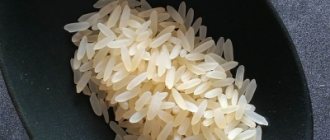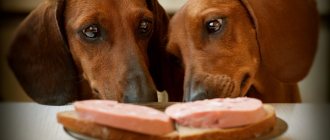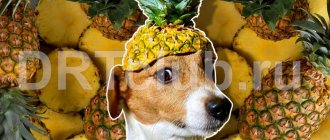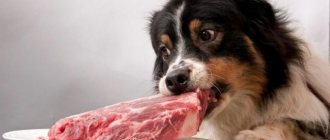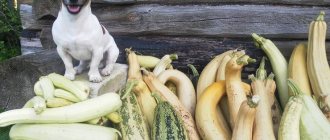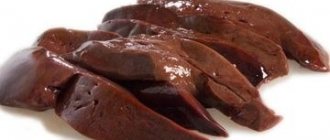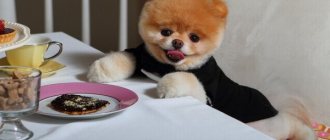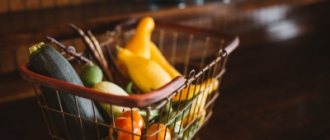A balanced diet has a beneficial effect on the human body, and the cat family is no exception. In order for a pet to be active and healthy, it needs natural products, which include meat products, fresh vegetables, cereals, and not leftover food from the table, as many cat owners are used to doing.
This list can also include dairy products, eggs, fish, which will allow you to form a more complete complex of minerals and vitamins.
What cereals can be given to cats?
Not all types of cereals are approved for consumption by cats, so before creating a diet, you need to figure out which cereals can be given to cats and which cannot? Among those useful for the cat's body are oatmeal, rice, buckwheat and barley groats.
Not all cereals can be given to cats
Cats are very capricious animals and it will be quite difficult to force them to eat porridge, so you still need to figure out how to lure the animal to such an unusual dish for them.
Buckwheat
The owner, before creating a diet for his pet, wonders whether a cat can eat buckwheat at all and will he eat it? It contains many components necessary for the body: proteins, carbohydrates, fiber, which can be converted into energy, as well as iron and calcium. Buckwheat porridge is especially important for a cat, because it contributes to its full development.
Must remember! For a kitten, porridge is prepared with milk with the addition of a small piece of butter, and for an adult animal - with broth.
Rice
Is it possible to give buckwheat to kittens and cats have figured it out, but what about rice cereal? The question is very serious, because it takes a lot of time to digest rice, but its benefits for the animal’s body are very great. Cereals contain many useful substances, but experts recommend introducing unpolished rice into the diet; it is more beneficial than regular rice.
Rice porridge must be prepared in vegetable broth, and when feeding an animal, mixed with meat or vegetables.
Rice porridge is very healthy for cats
Oatmeal
Oatmeal must be included in the diet. It is well absorbed by the body and cleanses the intestines. In addition, rolled oats are useful for both small kittens and adults. It contains many vitamins and mineral salts.
Some owners prefer to mix oatmeal with ready-made liquid food, but this should not be done. It is better to combine it with pieces of boiled meat, such as chicken, or with vegetables.
Advice! It is recommended to cook porridge for kittens in milk or steam it.
Barley porridge
This category includes pearl barley porridge and egg, which contain the most vitamins D, E, A, B and PP, as well as such important elements as iron, selenium, potassium, strontium, copper and manganese. Cats should be given barley and barley no more than 2 times a week and only if there is no gluten intolerance. Barley porridge is important for kittens for bone growth, and for adults it is necessary for the proper functioning of the digestive tract.
How to feed a cat?
Often, in the age of the information boom, people are misled by various sources. Some rules and rumors about what the most correct diet a cat should have were no exception. To understand this issue and break all stereotypes, consider the following recommendations:
It is enough to add porridge to your cat’s diet twice a week. Thus, the body will receive the optimal amount of useful microelements and vitamins. It is correct to give dry food and regular food separately. Mixing strains the intestines, so it is necessary to take a six-hour break if using two types of food. It is difficult to train an adult cat to eat cereal products, so it is better to do this from early childhood. To make the porridge attractive, you need to add pieces of fish meat and grated meat to it. If you don’t stop your cat’s habit of climbing on tables in time, then the diet will be disrupted. Human food is only suitable for humans. Here is one example of a misconception: canned fish intended for people are not suitable for pets. Such feeding can lead to the development of pathologies. It is necessary to monitor the weight of the animal. Do not allow excess, as well as vice versa, lack of normal weight
In such cases, urgently pay attention to nutrition, something needs to be changed. Fish can be given boiled, but do not make it the main diet. The norm is 1-2 times a week. There is no need to give milk, but fermented milk products must be included in the menu. The mistake of many cat lovers is that the bowl into which food is poured often throws in what was not eaten at the human table
As a result, the leftovers remain untouched, and within a few days it begins to deteriorate. After this, the bowl is not washed; a new portion of food is poured in, mixing with the spoiled remains.
Proper nutrition helps a cat build normal organ functioning, increase resistance to diseases, withstand negative environmental influences and always be in good shape. It depends on the owner what the pet’s diet and regime will be. Thanks to modern technology, there is access to alternative nutrition that is designed specifically for cats. Such products contain all the vitamins, microelements, the required amount of proteins, fats and carbohydrates.
Healthy nutrition means your cat's health and joy. Only if the rules are followed will the pet be active, cheerful and cheerful, and this will bring positive emotions to the owners.
Porridges prohibited for cats
What kind of porridge can be given to kittens and adult cats, and how many times a day is already clear. But what cereals are prohibited? First of all, it is necessary to exclude instant cereals. They contain a large amount of sugar, which is harmful to the cat's stomach, and some types of cereals are simply not absorbed by the body.
Corn grits
What cereals can be given to dogs: is it possible to give porridge?
It does not cause much harm, because it contains many vitamins and beneficial elements, but it should not be abused. Corn porridge contributes to constipation and flatulence, and problems with the pet’s health may arise due to the fact that it is poorly absorbed by the body.
Semolina
Semolina porridge for cats, prepared with milk, according to most owners, is simply necessary for the younger generation. But this opinion is erroneous, because according to the latest research, semolina is pure starch and there is nothing useful in its composition.
Important! Semolina contains gluten, which is difficult for the stomach to process and takes a very long time to digest.
Millet porridge
Although it is considered useful with a large content of necessary elements, there are more disadvantages in its use than advantages. Millet porridge is poorly digested and often leads to bloating in kittens and adult cats. It is forbidden to give millet to those cats that are intolerant to gluten, and it is present in the cereal.
Millet is a forbidden porridge
Pea porridge
Just like corn grits, peas are not digestible by the animal’s body. You won’t be able to get anything other than vegetable sugar from peas. In most cases, pea porridge leads to constipation and flatulence.
Grains in a cat's diet
Questions often arise on forums about how to cook cereal for a cat. “Experienced” people intervene in the topic and tear inexperienced owners to smithereens. Everyone, vying with each other, writes that cats should not be given porridge, but why this is not allowed is rarely explained. Both sides are understandable, newbies are confused, and experienced owners are tired of explaining the same thing. Let's understand the basics.
Cats can be given porridge. This product is not poisonous and will not cause immediate harm. The question is different - is it necessary? Porridge is a cereal, a source of carbohydrates, and they are slow and take a long time to digest. A cat is a predator that does not eat porridge in the wild, firstly, there is nowhere to get it, and secondly, there is no need for it. Owners who claim that their pets love porridge probably don’t know that most grains are not digestible by the cat’s body. Simply put, your pet has no choice but to love porridge, otherwise he will remain hungry.
Let's return to statements from childhood: porridge is healthy, we were told. Eat porridge, you will grow up big and strong... smart, brave. A spoonful of porridge for mom, dad and the rest of the family. Don't you think this is a blatant imposition? Modern doctors openly declare that specific cereals are useful when consumed in certain combinations, at certain times of the day, year... but not every day throughout life, and especially not in large quantities.
Experienced dog owners who have never owned cats are especially misled. Dogs really benefit from porridge along with meat and vegetables. However, no one will claim that dogs and cats are similar. Dogs walk outside every day, regardless of the weather and external factors, they get exercise... and by temperament, they are more emotional and active. Cats sleep up to 80% of the day. Is it possible to equal the needs of these animals?
The next moment is a mess! We are not talking about different types of cereals, but about the method of processing them. For example - Fig. Everyone considers rice healthy, versatile, unique. Rice is almost harmless, serves as a natural absorbent, cleanses the intestines, helps in the fight against excess weight, and does not contain gluten. That's all true, but there are several types of processing for this cereal. The healthiest variety is wild brown rice, the most useless is white, polished and parboiled rice. You can guess that the most useless type of cereal is the most delicious and preferred by people...and their pets.
Frequency of feeding the animal with cereals
Bones for dogs: can puppies be given and which ones?
After you have figured out which grains can be given to cats and which cannot, you need to understand how often it is given to your pet. If you do not adhere to certain dietary rules, then even the most harmless porridge can create many problems for the body.
Here's what you need to know:
- Porridge is allowed to be given no more than twice a week. This will be enough to take the required amount of vitamins and beneficial microelements from the cereals.
- If the animal is bottle-fed, it is prohibited to give cereal and dry food at the same time. The minimum gap between meals should be at least 6 hours.
- You cannot suddenly switch an animal from one type of food to another; this must be done gradually and in small portions.
- If you need to switch your cat to diet food for health reasons, then you should add meat, fish and vegetables to the porridge to saturate the natural food with nutrients.
- Pregnant and lactating cats need to boil porridge with milk as much as possible. This makes them easier and faster to digest.
- Milk porridge should not be given to kittens after one year. They need to be switched to porridge with meat, fish or vegetables.
- There should be the largest amount of offal in the diet, a little less porridge, it is also important to include greens, fats and vitamins.
- It is forbidden to put various seasonings in porridge, only salt in small quantities.
Proper nutrition is the key to a healthy pet
Is it possible to feed a cat buckwheat?
The beneficial effects of proper nutrition on the health and activity of your cat are 100% proven. To ensure that your pet not only feels good, but is also active, you must feed him natural foods, a mixture of fresh vegetables and grains. With this in mind, the answer to the question of whether a cat can be given buckwheat is definitely positive. Cereal porridges such as rolled oats, buckwheat, rice and barley are especially beneficial for cats. Is it possible to give a cat buckwheat? Are they good for your cat's digestion?
Proper preparation
The cat is a pretty fast animal. So, if you decide to feed her grains, the first thing you need to do is figure out how to properly feed her buckwheat.
Properly prepared porridge will make your cat very happy, even if he is careful. In order for the porridge to be pleasant for the cat and easily digested in the stomach, it is necessary to follow certain recommendations for its preparation.
- Buckwheat porridge should not be cooked in water, but in the broth in which meat or fish was cooked.
- To make porridge more easily digestible, it should have a liquid consistency.
- To satisfy the appetite, you can add pieces of the treat that your cat prefers to porridge - a few pieces of meat or fish.
- Warm the porridge to room temperature while feeding.
- Prepare the porridge without adding any spices (including salt).
- It should be remembered that, contrary to popular belief, buckwheat porridge should not be cooked in whole milk. This cooking method may affect your pet's digestive process.
The effect of buckwheat on the cat’s body
Buckwheat, which is good for your cat, contains a complex of vitamins and minerals that your cat needs. Their ingestion into the animal’s body is extremely important, because in a cat’s apartment he cannot independently obtain the corresponding elements. In this case, it is difficult to overestimate the valuable properties of buckwheat for cats.
Buckwheat is the leader in iron content in all cats and fully satisfies the body’s needs for this element. This, in turn, ensures the proper functioning of the cardiovascular and circulatory systems. In addition to iron, buckwheat contains many other nutrients:
Cooking porridge
In addition to finding out what kind of porridge can be given to cats, you also need to figure out how to prepare it correctly? It is recommended to cook it in meat broth for as long as possible so that it is thoroughly boiled. It is important to consider the proportions so that the porridge is not thick, but more viscous.
What branches can be given to rabbits in winter: pine or spruce?
When cooking cereals, it is forbidden to add spices or sugar; you can only add a little salt. Cats still cannot distinguish the taste of spices, and they only bring harm to the animal’s body.
Advice! It is recommended to mix porridge with fish or meat. But fish should be given no more than twice a week. It is advisable to choose boneless and non-greasy.
Below are several simple and healthy recipes for making porridge for cats of different breeds, including Scottish.
Porridge with vegetables
For cooking you can use rice, buckwheat or pearl barley. You will also need 1 boiled carrot and finely chopped chicken meat. All ingredients are thoroughly mixed and served to your pet.
Rice porridge with salmon
Boil the rice until cooked and has a sticky consistency. Add some finely chopped fish and hard-boiled eggs to the porridge.
Rice porridge with salmon
Porridge with broccoli and chicken
You can use any cereal. Boil it in chicken broth until tender. Separately, steam the broccoli and then chop it. Mix all ingredients well.
Beef liver porridge
Boil the cereal until tender, add a pinch of green peas, a few pieces of boiled meat and a little vegetable oil. The animal will definitely appreciate the prepared dish.
If you follow these recipes, you can quickly accustom your pet to proper and healthy food, rich in vitamins and microelements.
Is fish a natural food for cats?
To please the pet, the owner is ready to feed it even what a cat cannot be fed in principle: “Let him eat. She loves fish! My cat is smart and won’t eat anything that’s harmful.” The “fashion” for feeding cats fish arose for a simple reason - in most countries, fish is cheaper than meat. In nature, cats do not eat fish or seafood at all. Fish contains too many minerals and protein for a cat to regularly consume it without harm to its health. An excess of fish in the diet leads to urolithiasis and vitamin K deficiency.
You can feed your cat fish, but not more than 1-2 times a week. The fish must be sea fish, without bones and entrails, and must be boiled (5 minutes in boiling water). It is not recommended to feed your cat fish that live in fresh water - the risk of infection with helminths is too high.
Food for spayed or neutered cats
This category of animals is prohibited from feeding cereals that can cause obesity. These include corn, barley, semolina and wheat. Their consumption can also contribute to the development of urolithiasis.
Also, after surgery, cats and kittens are prohibited from eating fish and adding it to porridge. It is allowed to add boiled lean meat, such as chicken.
Important! Proper nutrition of castrated and sterilized cats will help avoid negative consequences and health problems.
Secrets of a cat's diet
In order for your animal to be healthy and active, you must follow certain feeding rules. For example, under no circumstances should you mix dry food with natural food. If you feed your cat both natural and ready-made food, then make sure that the interval between feeding is at least six hours.
It is necessary to accustom an animal to cereal crops in infancy. If the reason for switching the animal to porridge was forced, pureed fish or meat and vegetables should be added to the prepared porridge to enrich the diet.
To summarize, we can safely say that buckwheat in a cat’s diet is a healthy product. The only thing is that when starting to feed your cat buckwheat porridge, you need to start with small portions. However, this recommendation applies not only to buckwheat, but also to any new complementary food for pets.
By strictly following all of the above nutritional recommendations, you can ensure your pet has a long and healthy life.
Age at which kittens are allowed to eat porridge
It is allowed to introduce porridge into the diet of kittens from one month, and this should be done gradually and in small portions. It is recommended to give dairy products only up to a year, after which the pet should be switched to full adult food.
It is recommended to give milk porridge to pregnant cats to saturate the body with calcium, the supply of which is very important during this period.
Adult cats and male cats need to cook cereals in water or broth.
Feeding kittens with cereals
Beneficial properties of buckwheat
Veterinarians unanimously recognized buckwheat as the most valuable and safest cereal crop for cats and recommend regularly feeding porridge from it to pets. Buckwheat is rich in nutrients. It contains:
- vegetable proteins;
- cellulose;
- organic fatty acids – oxalic, citric, malic;
- B vitamins;
- tocopherol (vitamin E);
- niacin, or nicotinic acid (vitamin PP);
- trace elements (iron, iodine, zinc, cobalt, phosphorus, molybdenum, potassium, copper);
- many other substances beneficial to the body.
Compatibility of porridge with ready-made food
Experts prohibit mixing natural food and feed, because it is harmful to the health of pets. Since cats do not have very developed taste buds, they do not distinguish taste well, and constant changes in food can cause digestive upset.
If a kitten has been fed industrial food since birth, it is not recommended to switch it to cereal, because the food also contains a lot of useful vitamins and microelements necessary for health. And adding cereals to your diet can lead to severe gastrointestinal upset.
Is it possible to give porridge along with meat?
This not only can be done, but also necessary. It is recommended to add meat to buckwheat, rice and barley porridge. They also add a small piece of butter, either vegetable or butter.
As for oatmeal, it is recommended to mix it with vegetables, for example, carrots, broccoli, cabbage, beets, zucchini and others.
Mixing porridge and fish
You can and should mix porridge with fish, but you should take into account some recommendations:
- give fish in small portions and no more than once a week;
- You should give preference to mentai, hake, salmon or halibut;
- It is forbidden to give raw fish, but only boiled fish, this way all harmful microorganisms are killed;
- it is necessary to carefully separate the fish from the bone;
- There is no need to salt the fish during cooking.
Thus, if all recommendations are followed, the animal will receive a maximum of vitamins and beneficial microelements necessary for proper and healthy nutrition.
Do cats eat buckwheat porridge?
Most cats happily eat buckwheat porridge both in its pure form and with additives. It is easily absorbed in the gastrointestinal tract, does not cause allergic reactions and serves as a source of useful substances.
Benefit
Due to its rich chemical composition, buckwheat is considered one of the most valuable types of cereals for cats:
- First of all, it contains a lot of plant fiber, which improves digestion and eliminates constipation.
- Even heat-treated cereals retain B vitamins. They have a beneficial effect on the functioning of the brain and cardiovascular system. In addition, the composition contains vitamins E and PP.
- Buckwheat contains a lot of organic fatty acids - oxalic, citric, malic. As well as microelements useful for the well-being of pets - cobalt, phosphorus, molybdenum, potassium, copper.
- With regular consumption of this cereal, the cat's body's need for iron is fully satisfied. It is necessary for the proper functioning of the circulatory and cardiovascular systems.
- Buckwheat contains a lot of iodine. This trace element is responsible for the health of the endocrine system, including the thyroid gland.
- The large amount of zinc in this cereal promotes good metabolism and improves the sense of smell and taste.
- Folic acid included in the composition improves immunity and increases endurance.
Harm
In most cases, supplementary feeding in the form of buckwheat does not cause any harm to cats. The exception is situations when animals have some severe health pathologies. For example, oncology and autoimmune diseases.
It is not recommended to feed such porridge to pets prone to allergic reactions. Therefore, before introducing buckwheat into your pet’s diet, it is advisable to consult a veterinarian.
After the first feeding, you need to monitor the cat for some time. If she has signs of an intestinal disorder or allergies, porridges made from this cereal should be abandoned.
Does it make you lose weight?
There is a widespread belief among some pet owners that their pets may lose weight if this cereal appears on the cat's menu. However, it is not.
People often use buckwheat in mono-diets to lose weight. But in addition to this product, your pet’s diet will contain complete animal proteins and vegetables, as well as specialized food. Your pet is not in danger of losing weight.
How to properly prepare and serve
Cats are notoriously picky. In its raw and steamed form, buckwheat will not be absorbed in the pet’s body, and the cat itself will not eat such food. Therefore, the cereal must be thoroughly boiled. Veterinarians and nutritionists give some tips on how to properly prepare porridge for your pet:
- It is best to cook buckwheat in meat or fish broth - it is both more nutritious and disguises the taste of the cereal, which not every animal may like;
- for appetite, you can add finely chopped boiled meat or fish, mix with canned meat for cats or baby meat puree;
- The consistency of the porridge should be liquid, so it is better absorbed in the cat’s gastrointestinal tract;
- do not add spices - salt can lead to the development of urolithiasis, and spices and flavorings are addictive;
- you can add a little vegetable or butter to buckwheat;
- It is best to feed porridge at room temperature (if prepared in advance, do not give your pet food from the refrigerator; if necessary, warm it up).
The shelf life of ready-made buckwheat porridge in the refrigerator is no more than a week, but it is best to always cook fresh food: during storage, it can absorb the odors of foreign products stored in the refrigerator.
For an adult cat, there is no need to cook porridge in milk. Firstly, many animals develop lactose intolerance after a year, and instead of benefiting, such feeding will cause harm. Secondly, this method of preparation can disrupt the digestion process.
Are there any feeding restrictions?
Despite its safety, not all cats are suitable for buckwheat. Before introducing a product into a cat's diet, it is necessary to take into account its health status. Only after positive recommendations from a veterinarian can you introduce porridge into the diet if your pet has the following diseases:
- oncological;
- autoimmune;
- tendency to allergic reactions.
It would not hurt to consult a specialist if the cat is old or young. It is known that some pets may have individual intolerance to the product, although buckwheat porridge is considered a hypoallergenic food.
If a cat, according to the veterinarian's indications, takes vitamins and microelements, then buckwheat should be excluded from the diet, since an excess of these substances can adversely affect the health of the animal.


